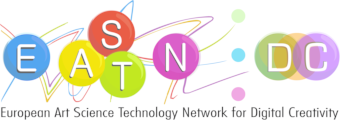Searching the World Wide Web for content is part of our daily routines for both professional and personal reasons. The accuracy of the results of a Web search is extremely important to the users, since in most cases they tend to largely limit themselves to the first few pages of results [1]. A good way to increase this accuracy and alongside it achieve better user satisfaction is to have a more elaborate knowledge of how a user behaves during the search process [2]. This behaviour though is not always set in stone. Depending on the user’s profile and the object of the search process it can vary greatly [3]. Thus, it is safe to assume that gaining a deeper understanding of how users behave on the Web when searching for content that is related to Art and Cultural Heritage may lead to conclusions that can help increase search result accuracy in this thematic field.
A first step in understanding this behaviour is going straight to the source. For the purposes of this article a series of semi-structured interviews were conducted with a group of individuals that have direct professional and personal connections to Art and Cultural Heritage. Through these interviews the researchers attempt to define the special characteristics of this particular type of users and create a list of criteria related to their behaviour during their search for Art and Cultural Heritage related content. In addition, a study of their expectations from the Web searching process and their evaluation of different search tools was conducted with the purpose of identifying the specific needs of this type of user. The group of interviewees consisted of artists, art historians, art and cultural heritage scholars, art professionals, journalists that cover matters related to art or cultural heritage, art students and more. Through a qualitative analysis of the interviews the researchers outline an archetype of users that search for Art and Cultural Heritage related content on the Web and identify a series of challenges that these users may face and what approach can be taken by art content providers to alleviate these issues.
References:
1.Silverstein, Craig & Henzinger, Monika & Marais, Hannes & Moricz, Michael. (1999). Analysis of a Very Large Web Search Engine Query Log. SIGIR Forum. 33. 6-12. 10.1145/331403.331405.
2.Baeza-Yates, Ricardo & Hurtado, C. & Mendoza, Marcelo & Dupret, Georges. (2005). Modeling user search behavior. Proceedings - Third Latin American Web Congress, LA-WEB 2005. 2005. 10 pp.-. 10.1109/LAWEB.2005.23.
3.Xie, Iris & Matusiak, Krystyna. (2016). User needs and search behaviors:. 10.1016/B978-0-12-417112-1.00008-9.
Back
“Reflections: Bridges between Technology and Culture, Physical and Virtual”
is supported by:






